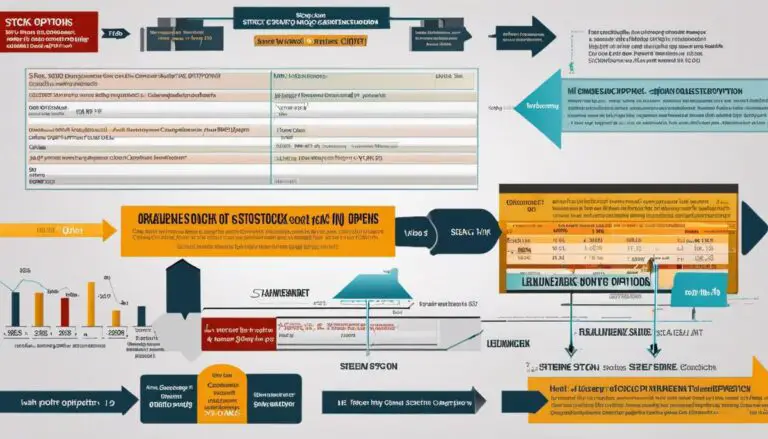Without a doubt, finance and investment areas represent a broad and complex landscape. Margin trading, one of the myriad investment strategies, involves using borrowed funds from brokers to trade financial securities. This sophisticated investment method expands the potential for profits, while at the same time, exposing traders to an augmented risk of losses. To navigate this multi-faceted avenue, one must be thoroughly familiarized with its underpinnings, beginning with a concrete understanding of the concept, key terminologies, and structure of margin trading, and extending to its prerequisites, potential risks, advantages, strategic practices, and regulatory norms.
Understanding Margin Trading
In the thrilling cosmos of finance and investing, one concept that isn’t for the faint-hearted is margin trading. A powerful tool that enables traders to amplify their profits, margin trading involves borrowing money or securities from a broker to execute trades of a larger volume. Alluring for its potential rewards yet risky due to the wider implications of leverage, comprehending margin trading is nonetheless critical for those desiring a profound understanding of modern financial markets.
Fundamentally, margin trading begins with a margin account. Separate from standard trading accounts, margin accounts allow traders to borrow money or securities from their broker to engage in trades, boosting known capital. Sounds lucrative? However, the added leverage also encases an inherent risk – a margin call comes knocking if your investment takes a downward turn.
Take this instance: Suppose you want to buy 100 shares of a company, each priced at $50. In total, this deal would cost $5000. However, with only $2500 in hand, a margin account allows you to borrow the remaining half from the broker. Thus, you successfully execute a trade double the size of available funds, increasing your profit potential should the stock price rise. This procedure represents the crux of margin trading.
Of concern is the concept of Maintenance Margin, often determined by the broker. If the equity in your account falls below this minimum requirement due to a decrease in the shares’ value, the dreaded margin call occurs. Your broker will demand either additional funds or sell a portion of your holdings to meet the required margin, protecting them from potential losses.
This dynamic equilibrium of financial acumen and smart leveraging, that encapsulates margin trading, ushers traders through a world of doubled gains but also doubled losses. Therefore, the phrase “high-risk, high-reward” is as pertinent here as it is in any area of life.
As you venture in the realm of investment opportunities, margin trading serves as a crafty tool to magnify profits. Don’t ignore the risks, rather master them. Have a candid conversation with your broker about the volatility of intended investments, take calculated risks, and let your financial savvy guide your journey. Remember, market forces are unpredictable and merciless. Yet, they bear no malice. With judicious use of margin trading resources, the scales can tilt favorably, amplifying the potential for significant profits.
All said, margin trading is not an approach tailored for everyone. It’s a tool of the trade designed specifically for those unfazed by risks, attuned to keen market observation, and capable of striving in the volatile nature of financial markets. Tread with caution, strategize brilliantly, and the realm of margin trading could become a bastion of exceptional financial wins.

Prerequisites for Margin Trading
Advancing the narrative from where we left off – after defining the particulars of margin trading, explicating its potential risks and provisions for profit maximization, it remains instrumental to delve into the prerequisites for embarking on this finance journey. Efficacy in margin trading isn’t a mere fluke, and necessitates strategic planning, thorough groundwork and a sharp, analytical approach.
Commencing the discussion with the absolute basic, a prospective margin trader needs to exhibit the essential baseline knowledge about stock markets and trading. The intricacies of margin trading can’t be logically construed without fundamental understanding of trading mechanisms, market trends, portfolio rebalancing, and diversification. A mathematical propensity and a lucid understanding of business fundamentals can enable traders to make more informed and prudently calculated decisions.
The second pre-condition is the acquisition of a Margin Agreement. This legal document outlines in fine detail the terms and requirements of the brokerage firm which a trader needs to fulfill in order to gamble on the margin. Though this Agreement is not a mandated requirement from the SEC (Securities Exchange Commission), it is still a common requirement from most brokers. Therefore, careful attention must be paid to understand the terms of this Agreement, as it is pivotal in broker selection and establishing the trader’s responsibilities.
Next comes the mandate of securing a minimum margin. To kick off trading on margins, Federal Reserve’s Regulation T necessitates traders to deposit a minimum of $2,000 or 100% of the stock’s price (whichever is less) in the margin account. However, different brokers might have different measures to stipulate minimum margins and thus, merit careful evaluation and understanding.
Decoding the risks associated with margin trading isn’t enough, proficient risk management is the cornerstone of successful margin trading. Traders need to be equipped to manage adverse situations, including declining stock prices or margin calls. A robust risk management plan is vital to weather the swings of this volatile endeavor.
The final prerequisite is an unwavering and resilient mindset. Margin trading is a roller-coaster ride, with its alluring high peaks and dauntingly deep troughs. Staying grounded in the light of profit spikes and maintaining composure during plummeting downturns is a trait that all successful margin traders share.
In conclusion, before stepping into the labyrinth of margin trading, one should equip themselves with key prerequisites including intrinsic market knowledge, a firm margin agreement, securing the minimum margin, sound risk management, and a steadfast mindset. It’s crucial to bear in mind that grabbling with margin trading isn’t akin to playing a lottery, it’s a meticulously planned strategy that requires mastering its prerequisites before reaping the rewards.

Risks and Advantages of Margin Trading
Diving deeper into the labyrinth of margin trading, there lurks another compelling facet, yet often overlooked, closely tied to its allure – flexibility. Margin trading infuses traders with the agility to react swiftly to market changes, thereby empowering them to seize transient, yet potentially rewarding opportunities. This increased buying power sprouts from the leverage offered by margin accounts and plays a pivotal role in amplifying the return on investment. However, it’s paramount to wield this sword of flexibility with utmost discretion, for with amplified rewards, the exposure to loss is also equally magnified.
Moreover, it quenches the thirst of versatile traders who seek fluidity in their strategies. Margin trading accommodates both short and long positions – an enviable feature for strategic market players who are non-conforming to the traditional ‘buy low, sell high’ mantra. Venturing into short selling via margin trading springs open the mighty gates of potential gains, even when the market bears down.
Interestingly, margin trading endears itself to those agile minds yearning for diversification. Leveraging one’s position to buy more equities results in a diversified portfolio, reducing the risk tied to the performance of a single stock. This is a classical risk management technique birthed from the proverb “Don’t put all your eggs in one basket”. But the punchline here is discretion and not diversification running into reckless horizon of equities yet undecoded.
While margin trading has potential advantages, it’s littered with inherent risks worth every ounce of consideration. Chief among those is the magnified loss. As much as profits can be amplified with this trading strategy, so can losses. A significant fall in the assets’ value can lead to margin calls, eventually forcing you to sell securities, often at unfavourable times. Also, since margin accounts often have higher interest rates, the profits from securities could be eaten away by the interest costs underperforming times.
In the grand scheme of market dynamics, although margin trading may be a tantalizing venture to the spirited, audacious, and experienced trader, it is infamously unpredictable and potentially damaging. As such, it is an arena that begs caution. Consider the manifold benefits and terrifying possibilities, and strap on the full armor of a holistic understanding of the market before stepping into the thrilling, yet potentially treacherous world of margin trading. Undoubtedly, informed strategy driven margin trading can offer unparalleled profit potentials amidst its inherent features of strategic diversification and amplified buying power.

Margin Trading Strategies
Building on the fundamental understanding of margin trading, it is crucial to equip oneself with the most efficient strategies to ensure maximum profits while encountering minimum losses. Navigating the tumultuous waves of stock and margin trading requires more than just an adventurous disposition. It necessitates a resilient, strategic, and innovative mindset, and readiness to adapt to market trends.
Margin trading can be seen as a two-edged sword. The light of unprecedented possibilities where traders can control more stocks with less money. The shadow casts the dark prospect of plunging into substantial losses. The key here is to craft an effective and pragmatic strategy that merges risk assessment and adaptive capabilities.
First and foremost, it is about defining a risk to reward ratio. Leveraging buys a higher stake in the market, and thus a compelling risk to reward ratio is essential. Calculated risks should only be taken when the potential reward surpasses the risk involved. Traders should never forget that leverage can magnify losses as much as it can escalate profits.
This segues into the concept of risk management through ‘Stop Loss Orders.’ By setting an auto-order to sell a stock when its price falls below a decided threshold, traders can cushion the possibility of severe losses. It is vital, though, to calibrate the stop loss with careful consideration of the volatility of the stock.
Another equally crucial factor is vigilance. Given the dynamically volatile nature of margin trading, regularly monitoring one’s investments helps decrease risks significantly. Decisions to sell or buy additional securities can be timely taken based on the market scenario. Proactivity preempts pain.
Discipline is the cornerstone of this dynamic domain. Traders must adhere to their planned strategies and avoid getting swayed by market frenzy. They should set their goals and thresholds and stick to them steadfastly.
Last but not least, a trader’s best friend is knowledge – an in-depth, comprehensive understanding of market trends, indicators, and mechanisms. Coupled with the ability to analyze economic forecasts and indicators astutely, such knowledge is the foundation of every successful strategy. Continuous learning and staying in sync with market developments ensure one maintains an upper hand in the game.
The road of margin trading is a challenging yet rewarding one. Towards successful ventures, it is wise to remember that swiftness, strategy, and temperament are the sailing winds of this sea. Embracing the challenges and learning from missteps can exponentially enhance the potential for success in this stimulative domain. Let’s innovate, strategize, and stay afloat towards success!

Photo by craftedbygc on Unsplash
Regulation of Margin Trading
Regulation has always been a cornerstone of financial markets, maintaining equilibrium and fostering a sense of trust among investors. Margin trading, due to its inherent risks and potential for hefty monetary losses, also falls under stringent regulatory rules. In the United States, the riveting game of margin trading is extensively supervised by the Financial Industry Regulatory Authority (FINRA) in conjunction with the Federal Reserve and the Securities and Exchange Commission (SEC).
The regulators have designed a framework governing margin trading. A hallmark of this regulatory set-up is the concept of margin requirements, emphasizing the minimum deposit a trader must provide to initiate a trade. Enforced by the Federal Reserve’s Regulation T, this requirement usually equates to 50% of the total value of the securities purchased.
In addition, minimum maintenance margin levels are in place, typically stipulated at a minimum of 25% of the total market value of the securities. But brokerage firms often set this at a higher rate of 30-40%, thus establishing a safety net for themselves in case market volatility forces traders into a margin call situation.
Regulation of margin trading also takes the form of a ‘pattern day trading‘ rule levied by FINRA. Under this rule, any trader who makes more than four day trades within five business days is classified as a ‘pattern day trader.’ For such traders, the brokerage firm, in turn, has the right to establish a higher minimum maintenance margin requirement, marking it as another level of risk management.
Securities laws and regulations also play a pivotal role. The SEC oversees the initial public offering process for companies listing on exchanges, setting detailed disclosure requirements that are intended to provide investors with comprehensive, material information about the company in question. This aims to ensure transparency and avoid potential manipulation in the market, stimulating a fair trading environment.
Regulatory bodies also demand brokers to furnish traders with an intricate risk disclosure document, highlighting the risks related with margin trading before a margin account can be established. This detailed document is designed to furnish traders with knowledge about potential outcomes, fostering a safe trading environment.
Moreover, recent announcements indicate an increasing focus on the use of margin trading in the cryptocurrency realm. Regulatory oversight of such operations remains a work in progress, yet it is evidence that authorities are starting to recognize the surge in implementation of margin trading across the diverse investment landscape.
Nevertheless, despite the laws and guidelines in place, the ultimate responsibility rests with the trader. As the market landscape evolves, traders should stay attuned to regulatory changes that could impact their margin trading strategies. While regulation seeks to safeguard market integrity, due diligence and informed decision-making remain key safeguards for an investor’s journey in the eminently alluring, yet uncertain world of margin trading.

Photo by coinhako_official on Unsplash
In a world where finance and investment methodologies are ever-evolving, keeping abreast of the intricate workings, strategies and regulatory norms of margin trading becomes imperative. While the allure of amplified profits and enhanced buying power may be enticing, always remember that these come with an added layer of risks, which too must be navigated adeptly. Therefore, a comprehensive understanding, careful planning, and diligent practices are the pivotal keys to engage successfully in this complex sphere of investment. Margin trading can open up a realm of possibilities, but it always pays to tread with knowledge, caution, and foresight.



